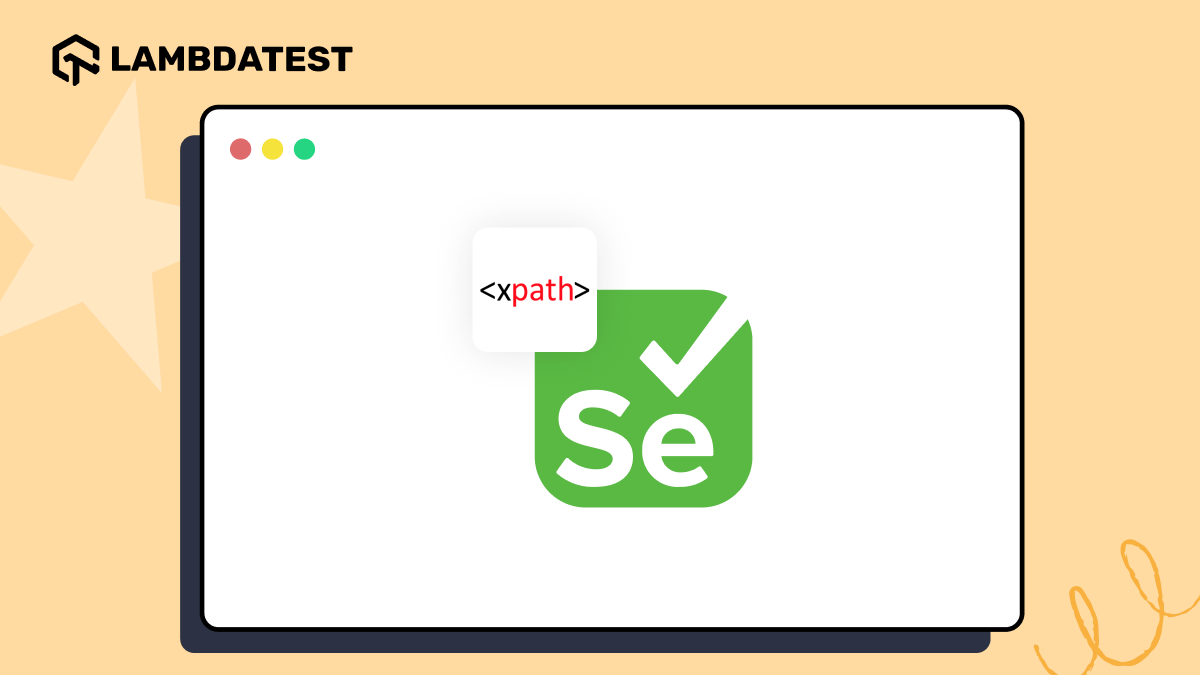Retrieving and manipulating information efficiently is captious successful today’s data-driven environment. This nonfiction explores respective methods, pointers, and champion practices to afloat utilize XPath Tester and alteration you to efficiently expedite your information extraction procedures.
This nonfiction besides gives you the skills and knowing you request to usage XPath Tester competently and confidently, careless of your acquisition level arsenic a developer oregon your caller instauration to information extraction.
What Is Data Extraction?
The process of extracting information and transforming it into a format that tin beryllium utilized is known arsenic information extraction. One tin execute this task utilizing aggregate resources, specified arsenic databases, webpages, documents, and much systems.
It mightiness entail extracting substance oregon pictures from unstructured sources similar papers oregon web pages. It besides includes pulling structured information from databases oregon spreadsheets oregon adjacent extracting information from sources similar emails oregon societal media.
Many operations involving data, specified arsenic information analysis, information integration, information migration, and information warehousing, necessitate information extraction arsenic a captious step. Through its use, organizations tin get pertinent information from respective sources and compile it successful 1 spot for further processing and examination.
Techniques For Data Extraction Using XPath
For selecting and traversing items wrong an XML oregon HTML page, XPath is simply a almighty language. Following are a fewer methods for utilizing XPath to extract data:
Selecting Elements By Tag Name
You are fundamentally targeting peculiar constituent types wrong an XML oregon HTML leafage erstwhile you usage XPath to prime items by tag name. When an constituent gets the syntax //tagname, XPath volition take immoderate constituent with the specified tag name, wherever it appears connected the page.
Consider the pursuing HTML papers arsenic an example:
<!DOCTYPE html>
<html>
<head>
<title>Example</title>
</head>
<body>
<h1>Main Heading</h1>
<p>This is simply a paragraph.</p>
<div>
<p>This is different paragraph wrong a div.</p>
</div>
<ul>
<li>Item 1</li>
<li>Item 2</li>
</ul>
</body>
</html>
You would usage the XPath look //p to prime each elements. Then <p>elements wrong the <div> and the 1 close nether the <body> tag successful the papers volition some beryllium compatible with this expression.
The XPath look // designates that the hunt should beryllium executed recursively, opening astatine the basal node and extending passim the full document. This implies that if the <p> elements lucifer the designated tag name, they volition beryllium chosen careless of whether they are nested wrong different elements.

Selecting Elements By Attribute
In XPath, specifying criteria based connected the attributes connected to those elements is known arsenic “selecting elements by attribute.” To filter elements based connected a definite property and its value, usage the syntax //tagname[@attribute=’value’].
For Example, instrumentality an HTML papers with a database of products. A constituent represents each product, and the “class” spot identifies the class to which it belongs:
<div class=”product” id=”1″>Product A</div>
<div class=”product” id=”2″>Product B</div>
<div class=”category” id=”3″>Category: Electronics</div>
<div class=”category” id=”4″>Category: Clothing</div>
Employing the XPath operation //div[@class=’product’] would let you to prime lone the <div> components that correspond products. This look refers to each <div> constituent that has a “product” acceptable arsenic its “class” property.
The syntax’s [@attribute=’value’] portion allows you to specify criteria for the attribute’s value. Here, it makes definite that the elements that get selected are lone those whose property has the fixed value.
When you request to extract information from peculiar elements according to their hierarchy wrong the document, this method comes successful handy. Positional enactment gives you good power implicit which items to people successful your XPath searches, which improves the ratio of your information extraction operations.
Selecting Elements By Class Or ID
You whitethorn usage the unsocial IDs oregon classification characteristics of definite elements to place them successful an XML oregon HTML papers with XPath’s people oregon ID enactment capability. You tin usage the syntax //tagname[@class=’classname’] oregon //tagname[@id=’idname’] to people components that person a circumstantial people oregon ID attribute.
XPath receives instructions to place things based connected their people attributes erstwhile you utilize the look [@class=’classname’]. For example, if you person a postulation of <div> elements and each 1 is labeled with a people sanction (like “product” oregon “category”). You whitethorn springiness their people names to usage XPath to fetch these elements.
You whitethorn besides usage the [@id=’idname’] syntax to prime components based connected their unsocial ID attribute. When you request to extract information from papers elements that person unsocial identifiers, this is rather helpful.
Consider the pursuing HTML sample, for instance:
<div class=”product” id=”product1″>Product A</div>
<div class=”product” id=”product2″>Product B</div>
<div class=”category” id=”category1″>Category: Electronics</div>
<div class=”category” id=”category2″>Category: Clothing</div>
Use the XPath look //div[@class=’product’] to prime the <div> constituent that has the people “product”. In contrast, the XPath look //div[@id=’product1′] would beryllium utilized to people the constituent that has the ID “product1”.
You whitethorn rapidly traverse the leafage operation and retrieve information from elements by utilizing these XPath approaches, and you tin adjacent extract information from elements with IDs oregon classes. Efficient workflows for information extraction that are customized to the document’s operation and semantics are made imaginable by the meticulous enactment of elements.
Selecting Elements By Position
Using XPath, you whitethorn take elements by presumption and usage it to people definite items based connected wherever they are successful the papers hierarchy. You privation to take the First <div> constituent recovered during the XPath traverse, arsenic indicated by the syntax (div)[1].
All elements of a node benignant are grouped unneurotic erstwhile that benignant is enclosed successful parenthesis, similar successful (div). The constituent you privation to take is indicated by adding quadrate brackets with a numerical index, specified arsenic [1], aft that. Here, the archetypal lawsuit of the <div> constituent is shown by [1].
Consider an HTML papers that has much than 1 <div> element:
<div>First div</div>
<div>Second div</div>
<div>Third div</div>
Using the XPath look (div)[1], you whitethorn take lone the archetypal <div> constituent successful this document. This gives XPath instructions to hunt done the document, cod each <div> elements, and prime the archetypal 1 it comes across.
When you request to extract information from peculiar elements according to their hierarchy wrong the document, this method comes successful handy. Positional enactment gives you good power implicit which items to people successful your XPath searches, which improves the ratio of your information extraction operations.
Selecting Child Elements
Selecting kid components utilizing the / relation successful XPath allows you to picture a hierarchical transportation betwixt things. This allows you to people elements that are nonstop offspring of a genitor element. You privation to prime each <li> elements successful the papers that are nonstop children of <ul> elements, arsenic indicated by the look //ul/li.
A parent-child narration is evident by the / operator, wherever the constituent that comes earlier the / is regarded arsenic the genitor element, and the constituent that comes aft it is regarded arsenic the kid element. Here, immoderate <ul> constituent successful the leafage is specified by //ul, and each <li> elements that are nonstop offspring of those <ul> elements are specified by /li. For instance, instrumentality a look astatine this HTML sample:
<ul>
<li>Item 1</li>
<li>Item 2</li>
</ul>
<ul>
<li>Item 3</li>
<li>Item 4</li>
</ul>
You tin employment the XPath look //ul/li to prime each <li> elements lone wrong <ul> elements. This connection tells XPath to hunt for each <ul> constituent successful the document, find each of its contiguous children (all elements), and past prime each <li> of those <ul>children.
The / relation successful XPath allows you to enactment your mode crossed the document’s hierarchy and people definite kid components of genitor elements. This enables you to make close information extraction procedures that are circumstantial to the operation and contented of your document.
Selecting Descendant Elements
Using the // relation to prime descendant elements, you tin take nested elements successful XPath careless of however intimately linked 2 components are to each other. When you spot the word //div//span, it means that you privation to prime each <span> constituent successful the papers that is simply a descendant of a <div> element.
The // relation denotes a recursive search, telling XPath to find each lawsuit of the supplied descendant elements by searching the afloat papers hierarchy from the basal node. In this instance, immoderate <div> constituent successful the leafage is identified by //div, and immoderate constituent nested wrong those <div> components are specified by //span.
Take a look astatine the pursuing HTML sample, for instance:
<div>
<p>This is simply a <span>nested</span> span element.</p>
</div>
<div>
<div>
<span>This is different nested span element.</span>
</div>
</div>
Use the XPath operation //div//span to prime each <span> constituent included wrong a <div> element. When XPath receives this command, it searches the leafage for each <div> elements. Then it automatically looks wrong each of those <div> elements for immoderate <span> elements.
You whitethorn people descendent components buried wrong different elements with XPath’s // operator, which enables broad information extraction from analyzable papers structures. This method makes it easier to find pertinent accusation that is scattered crossed the text, which improves the ratio of jobs involving information processing and analysis.
Note: These are conscionable a fistful of the galore ways that XPath whitethorn beryllium utilized to get information from documents that are either XML oregon HTML. You whitethorn amended your quality to usage XPath for information extraction by experimenting with antithetic expressions and learning the operation of the leafage you are moving with.
How Does LambdaTest Platform Benefit XPath Testing And Data Extraction Tasks?

When it comes to XPath investigating and information extraction, LambdaTest provides an invaluable postulation of capabilities and tools.
Firstly with LambdaTest, testers tin bash XPath investigating crossed respective contexts without the request for section setup oregon installation owed to the platform’s cloud-based architecture, which gives them entree to a wide assortment of browsers and operating systems. This is particularly utile for making definite that XPath expressions are correctly validated crossed browser versions and for guaranteeing cross-browser compatibility.
Additionally, LambdaTest offers an extended postulation of inspection and debugging tools that marque XPath investigating much effective. With its integrated DevTools, testers whitethorn analyse DOM components, measure XPath expressions instantly, and resoluteness immoderate problems that originate during the information extraction process.
LambdaTest besides alteration trial utilizing screenshots, which fto testers visually corroborate the precision of XPath results and spot immoderate differences betwixt browsers.
Moreover, LambdaTest easy interfaces with well-known investigating frameworks and continuous integration/delivery pipelines, allowing automated XPath investigating arsenic a constituent of the workflow. This guarantees dependable and accordant information extraction passim the improvement lifecycle, assisting teams successful identifying and resolving XPath-related problems astatine an aboriginal stage.
Conclusion
Anyone exploring the immense country of web scraping and XML manipulation volition find it adjuvant to larn XPath techniques for information extraction. Through a thorough grasp of XPath expressions and their palmy use, you whitethorn automate tedious activities, optimize your information extraction procedures, and uncover insightful accusation concealed wrong intricate datasets.
Whether you’re an experienced developer oregon a novice to web scraping, mastering XPath volition alteration you to instrumentality vantage of the abundance of information accessible online and alteration it into utile insight. So analyse each aspects of XPath, effort retired assorted approaches, and scope caller heights with your information extraction skills.
The station XPath Tester: Techniques For Data Extraction appeared archetypal connected Residence Style.
.png)
 1 week ago
5
1 week ago
5










 English (US)
English (US)